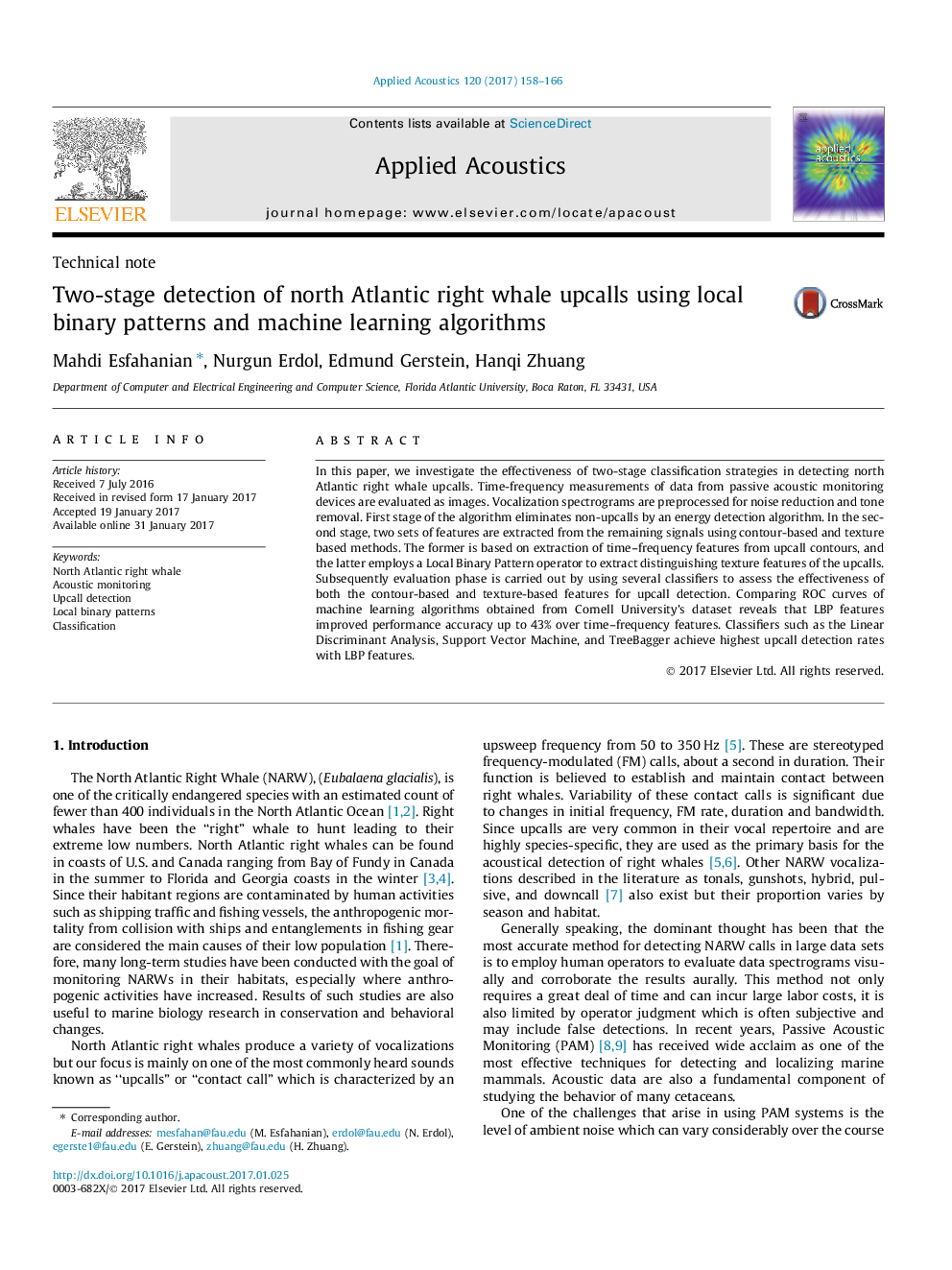| Article ID | Journal | Published Year | Pages | File Type |
|---|---|---|---|---|
| 5010935 | Applied Acoustics | 2017 | 9 Pages |
In this paper, we investigate the effectiveness of two-stage classification strategies in detecting north Atlantic right whale upcalls. Time-frequency measurements of data from passive acoustic monitoring devices are evaluated as images. Vocalization spectrograms are preprocessed for noise reduction and tone removal. First stage of the algorithm eliminates non-upcalls by an energy detection algorithm. In the second stage, two sets of features are extracted from the remaining signals using contour-based and texture based methods. The former is based on extraction of time-frequency features from upcall contours, and the latter employs a Local Binary Pattern operator to extract distinguishing texture features of the upcalls. Subsequently evaluation phase is carried out by using several classifiers to assess the effectiveness of both the contour-based and texture-based features for upcall detection. Comparing ROC curves of machine learning algorithms obtained from Cornell University's dataset reveals that LBP features improved performance accuracy up to 43% over time-frequency features. Classifiers such as the Linear Discriminant Analysis, Support Vector Machine, and TreeBagger achieve highest upcall detection rates with LBP features.
